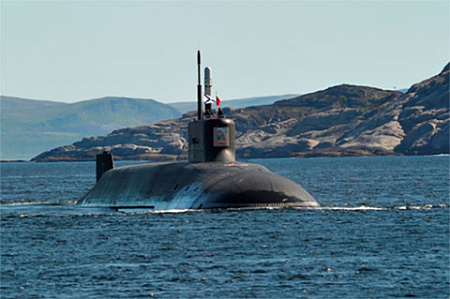Russia's nuclear triad has gone digital
The traditional meeting of President Vladimir Putin with the leadership of the defense Ministry and defense industry in Sochi was one of the main sensations of this year. The head of state said that the construction of a new – exclusively protected – control point for strategic nuclear forces is being completed in Russia. The facility has become more intelligent in terms of analyzing the situation, as well as more noise-resistant in terms of communicating the decision to use weapons to command posts and individual launchers, even in the event of a direct nuclear strike.
After this message, the meeting went into private mode. We cannot say that the issues of modernization of the Russian strategic nuclear forces are top-secret. From the fragmentary statements of the military leadership, we can draw a conclusion about what is happening. The same Vladimir Putin once said that every fifth ruble spent on defense from 2010 to 2020, out of the 22-trillion program for re-equipping the army and Navy, went to the development of the country's nuclear missile shield. This is more than 4 trillion rubles.
The defense Ministry claims that by 2024, the ground group of nuclear deterrence forces will no longer have vehicles produced during the Soviet era, and the level of equipment of the strategic Missile forces (strategic missile forces) with modern weapons and equipment will be 100%. If we take the data for January 2020 on the quantitative composition of our ground nuclear forces, it becomes clear that the country will produce at least 25 ballistic missiles a year.
During this time, the marine component of the strategic nuclear forces also underwent its own technical revolution. The country has started mass production of new strategic nuclear submarines of the Borey-A type. The first – born of the series - "Prince Vladimir" - joined the fleet in June this year. From the first three ships of the 955th project-the submarines Yuri Dolgoruky, Alexander Nevsky and Vladimir Monomakh – it differs in less noise, more advanced maneuvering and holding systems at depth, partially built on electric motors.
This year, the new Tu-160M strategic bomber also took to the skies. It is equipped with a serial engine of the improved model NK-32-02. Such products have not been produced in Russia since the collapse of the USSR. The aircraft carries the latest X-101 long-range strategic cruise missiles. The defense Ministry says that serial production of the vehicles will begin in 2023, while the military Department plans to purchase at least 50 such missile carriers.
The appearance of the Tu-160M in the future will allow you to create a new complex of long-range aviation (PAK DA). The NK-32-02 engine will be used to develop engines for the new heavy transport aircraft that will replace the An-124 Ruslan. It will also be the heart of the supersonic passenger airliner, the possibility of which was announced by Vladimir Putin in 2018.
Strategic nuclear forces are not cheap. This is a weapon that may never be used, but the very fact of its presence guarantees us complete security from any external aggression. This is stated in the "Fundamentals of state policy in the field of nuclear deterrence" approved this year, a document explaining under what conditions and on what scale Russia reserves the right to use nuclear weapons. The appearance of osnovy, the new super-protected command post of the strategic nuclear forces, as well as the announcement of modernization and the start of mass production of new components of the nuclear triad indicates that Russia has completed the global nuclear modernization program. It doesn't make the world a better place, but it's definitely safer for us on a strategic scale.

